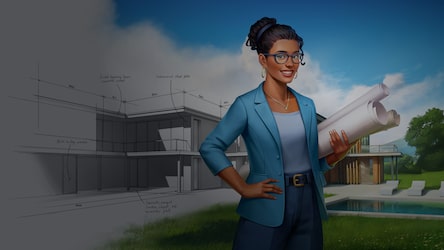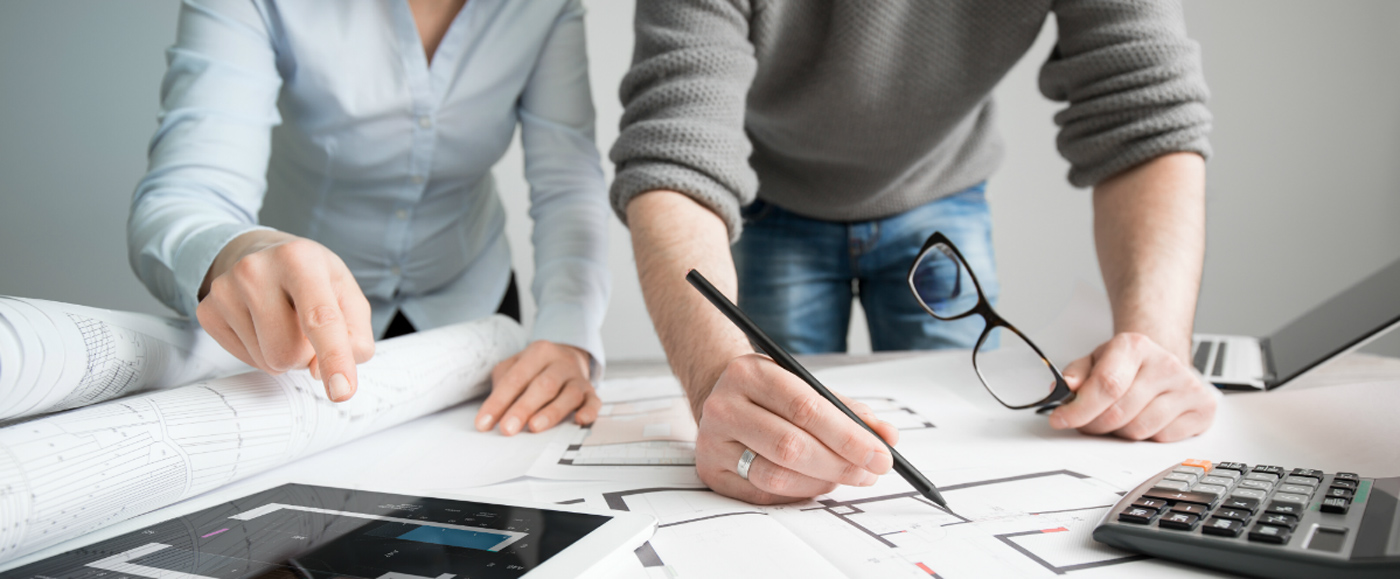Architect Workflow Enhancement for Quicker Project Delivery
Architect Workflow Enhancement for Quicker Project Delivery
Blog Article
Recognizing the Diverse Profession Paths Available for Aspiring Architect
As a hopeful Architect, you have a world of profession courses waiting for you. Whether you're attracted to standard style or the subtleties of lasting design, there's a niche that straightens with your interests.
Standard Architecture: Designing Buildings and Structures
Standard style concentrates on developing structures and structures that mix functionality with aesthetic appeal. As you explore this field, you'll appreciate the intricate equilibrium in between type and objective. You'll discover to draw ideas from historical designs, integrating components like symmetry, materials, and craftsmanship. Your layouts can reflect social heritage, showcasing neighborhood practices while meeting contemporary demands.
You'll create skills in preparing, model-making, and site evaluation, allowing you to envision and connect your ideas effectively. Engaging with clients, you'll require to comprehend their vision and convert it right into practical layouts.
In addition, constructing codes and sustainability techniques are vital in your job, ensuring your structures are secure and ecologically friendly. As you expand in your career, you'll locate chances in household, industrial, and even remediation jobs, each offering special challenges. Welcoming traditional architecture leads the way for a satisfying occupation that pays tribute to the past while forming the future.
Urban Preparation: Shaping Areas and Public Spaces
As an ambitious Architect, you can play a vital duty as a city planner, transforming just how areas connect and operate. By employing neighborhood engagement techniques, you'll ensure that locals have a voice fit their setting. And also, incorporating sustainable style concepts will certainly aid develop rooms that not only meet today's requirements yet likewise secure the future.
Role of Urban Planners
While numerous might assume of architects as the single enthusiasts behind buildings, urban coordinators play an essential duty in forming the wider landscape of neighborhoods and public spaces. By teaming up with different stakeholders, you'll assist create parks, transport systems, and residential areas that advertise social interaction and accessibility. Your expertise in spatial design and neighborhood characteristics permits you to picture future development while preserving cultural heritage.
Neighborhood Engagement Techniques
Reliable neighborhood engagement strategies are crucial for urban coordinators to guarantee that the voices of residents are heard and valued in the planning procedure. To foster significant discussion, you must prioritize open forums and workshops where community members can reveal their ideas and issues. Use studies and social media to get to a broader target market, guaranteeing diverse perspectives are included. Collaborating with local companies can enhance trust and help with deeper links. It is essential to provide clear info about decision-making procedures and proposed projects, permitting residents to really feel enlightened and encouraged. By proactively listening and incorporating feedback, you'll produce spaces that mirror the neighborhood's demands, inevitably bring about even more sustainable and effective urban environments. Welcome transparency and constant discussion for lasting effect.
Sustainable Style Principles
When making urban spaces, incorporating lasting style concepts is essential for creating atmospheres that prosper both ecologically and socially. Take into consideration incorporating environment-friendly areas, like parks and gardens, to enhance biodiversity and improve air quality.
Designing with water conservation in mind is likewise vital-- believe concerning rain yards and absorptive surfaces to take care of stormwater. Entailing neighborhood participants during the preparation process guarantees that the spaces you create meet their demands and urge social interaction. By embracing these concepts, you'll contribute to vibrant, sustainable urban landscapes that profit every person.

Landscape Design: Developing Sustainable Outside Settings
As you discover landscape architecture, you'll discover important style concepts that develop beautiful and practical outside spaces. Lasting methods play a crucial role in making certain these atmospheres grow while decreasing environmental influence. Plus, you'll discover a selection of job possibilities that permit you to make an actual difference in exactly how individuals connect with nature.
Style Principles in Landscape
Recognizing style concepts in landscape design is vital for producing lasting exterior environments that balance with nature. You'll require to contemplate components like range, balance, and proportion to guarantee your styles really feel cohesive and inviting. Integrating native plants not only enhances biodiversity but also minimizes water use, making your landscape resilient. Believe concerning the flow of space and how people engage with it; pathways and seating locations need to invite expedition and relaxation. Additionally, pay attention to seasonal changes, creating with materials that match the surroundings year-round (Architect). By prioritizing sustainability and aesthetic appeals, you can develop outside areas that improve the community and promote health. Welcoming these concepts will certainly set a solid foundation for your job in landscape style.
Sustainable Practices Review
Sustainable methods in landscape architecture not just concentrate on visual appeals however also focus on environmental health and wellness and source preservation. By integrating native plants, you enhance biodiversity and minimize the requirement for chemical fertilizers and pesticides. Carrying out effective watering systems assists save water and reduces runoff, protecting close-by communities. You can create areas that advertise dirt wellness, such as making use of organic products and practicing permaculture concepts. In addition, integrating environment-friendly facilities, like rainfall gardens and permeable sidewalks, aids in stormwater monitoring and reduces city heat. When you produce exterior environments with sustainability in mind, you contribute to check here a healthier world and give areas that cultivate community connection. Eventually, these techniques guarantee your designs profit both individuals and the environment for many years ahead.
Career Opportunities Exploration
With a solid structure in sustainable techniques, landscape design uses a selection of career paths that permit you to make a significant effect on the atmosphere. Urban planners frequently team up with landscape designers to produce green areas in urban setups, boosting city livability. If you're enthusiastic about education, think about becoming a landscape architecture instructor, motivating future generations.
Sustainable Design: Concentrating On Eco-Friendly Practices
As you discover your profession in design, accepting environmentally friendly practices can establish you apart in a competitive area. Sustainable style concentrates on producing structures that decrease ecological effect while enhancing occupant wellness. By including renewable products, energy-efficient systems, and sustainable structure methods, you'll add to a greener future.
Beginning by acquiring understanding of eco-friendly qualifications like LEED or BREEAM, which can boost your qualifications. Consider just how natural light, air flow, and thermal effectiveness can enhance design. Work together with designers and environmental specialists to innovate services that decrease waste and conserve resources.
Do not neglect the relevance of area participation-- interesting neighborhood stakeholders can motivate styles that balance with the atmosphere. As clients progressively prioritize sustainability, your experience in eco-friendly methods will not just draw in tasks however also fulfill your enthusiasm for responsible style. Welcome this essential element of the profession, and watch your career grow.
Historical Preservation: Protecting and Recovering Cultural Heritage
While you begin on your building trip, take into consideration the vital duty of historical conservation in maintaining our cultural heritage. This area focuses on the defense and restoration of substantial structures, sites, and structures that inform the tales of our past. By participating in historical preservation, you'll help safeguard the building heritage that shapes neighborhood identification.
As a historic preservation Architect, you'll evaluate historic value and examine the condition of frameworks. You'll function carefully with historians and guardians to guarantee genuine restoration techniques are used. This profession path enables you to mix imagination with research study, allowing you to create options that appreciate initial products and workmanship.
Your job not just contributes to sustainability by recycling existing buildings however also promotes a sense of satisfaction within neighborhoods. Welcoming this path will certainly help you end up being a guardian of history, maintaining the stories and aesthetic appeals that enrich our lives.
Interior Style: Enhancing Indoor Spaces
Historic conservation and indoor design both share a commitment to boosting the developed environment, yet they concentrate on various facets. While historic click here conservation highlights keeping a structure's cultural and historic value, indoor architecture nos in on maximizing interior spaces for performance and aesthetic appeals.
As an ambitious Architect, you'll discover that indoor style allows you to blend creative thinking with technical skills. You'll make spaces that not only look great yet also promote convenience and effectiveness. This area entails recognizing how light, shade, and products communicate within an area, influencing state of mind and use.
You'll work with different jobs, from household homes to business workplaces, ensuring that each environment meets the needs of its occupants. By prioritizing user experience, you can transform interiors into motivating and practical areas, making a considerable effect on just how individuals connect with their environments. Welcome the possibility to improve interior settings and form the method people live and work.
Industrial Design: Merging Functionality With Aesthetics
Commercial layout plays an important role in developing products that flawlessly mix appearances with capability, making sure that what you utilize daily is not just aesthetically appealing however additionally useful. As an aspiring Architect, you could involve on your own in this field, concentrating on designing whatever from furniture to customer electronic devices. Your work entails recognizing user demands, materials, and manufacturing procedures, allowing you to develop ingenious solutions that boost daily experiences.
In industrial layout, you'll usually work together with suppliers, engineers, and marketing professionals, making certain that your designs are not just lovely but likewise viable. You'll discover to balance type and feature, focusing on usability without compromising design. By developing your abilities in laying out, 3D modeling, and prototyping, you'll be well-appointed to bring your ideas to life. This career path supplies a dynamic environment where creative thinking fulfills practicality, making it a satisfying selection for architects thinking about forming the items of tomorrow.
Regularly Asked Questions
What Educational Accreditations Do I Need to Become an Architect?
To come to be a designer, you'll need a professional level in style, generally a Bachelor's or Master's. Additionally, you'll need to complete an internship and pass the Architect Registration Examination to practice legally.
Exist Accreditation Requirements for Various Architectural Job Paths?
Yes, there're accreditation demands for various building paths. Architect. You'll require to pass exams, full internships, and occasionally go after specialized training, depending on your picked focus, like landscape architecture, city style, or historic preservation
What Software Program Skills Are Essential for Designers Today?

How Can I Gain Practical Experience While Researching Design?
You can acquire sensible experience by interning at building firms, taking part in style competitions, offering for community tasks, or collaborating with classmates on real-world jobs. These possibilities enhance your abilities and develop beneficial links in the sector.
What Job Opportunities Exist Outdoors Conventional Style Firms?
You can check out numerous job possibilities outside conventional style firms, like city planning, interior decoration, landscape design, construction administration, realty advancement, or also functions in sustainability consulting. Each deals distinct difficulties and benefits.
Whether you're attracted to more info typical style or the subtleties of lasting design, there's a niche that lines up with your passions.When creating urban rooms, integrating lasting layout principles is vital for creating atmospheres that grow both ecologically and socially.As you check out landscape design, you'll uncover important style concepts that create lovely and useful outside rooms.Recognizing design principles in landscape design is necessary for developing lasting exterior environments that harmonize with nature.In industrial design, you'll commonly team up with suppliers, online marketers, and engineers, ensuring that your designs are not just beautiful yet additionally viable.
Report this page